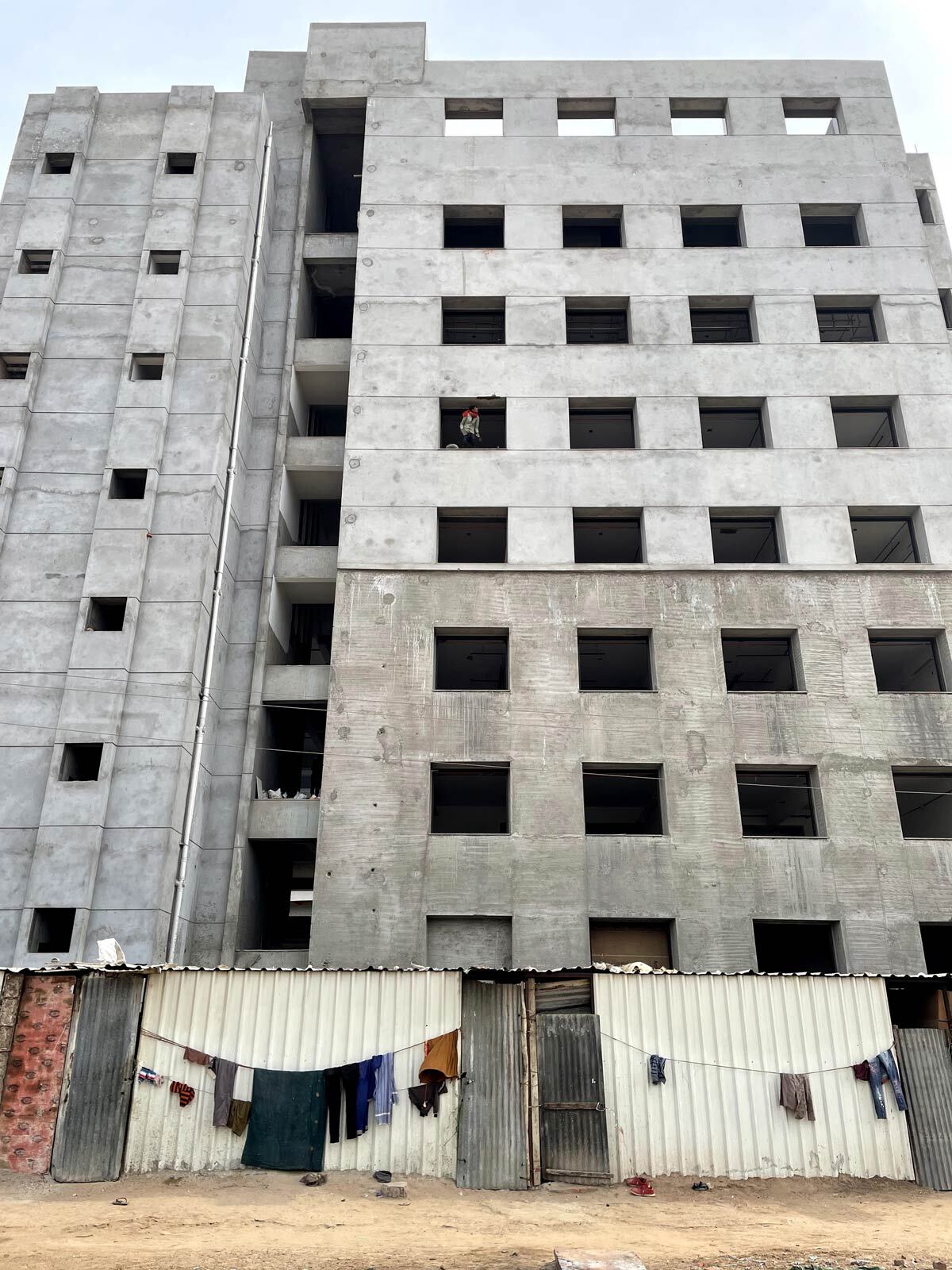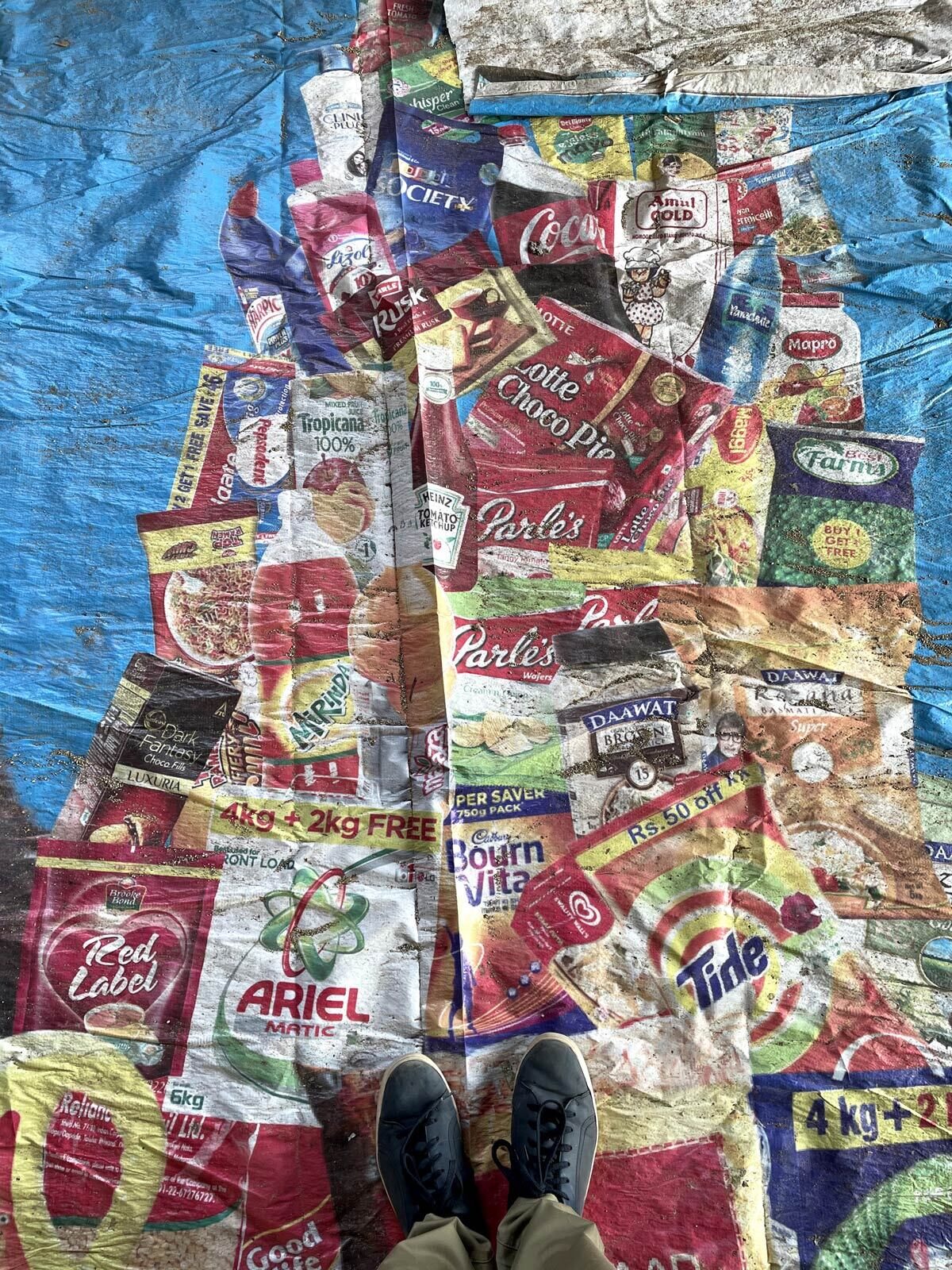Shripal Shah
Outside of INSIDE - Portraits of alumni
For their self evaluation report in 2021, INSIDE conducted interviews with alumni who, in one way or another, represented the different positions on the bandwidth and generations of alumni. The interviews were conducted by the head of the department who also wrote their reports. These reports were submitted to the interviewees for approval after which they could add comments.
Shripal Shah, from India and a 2020 graduate, volunteered for an interview himself after receiving the invitation to the INSIDE Questionnaire. He had more suggestions than he could put in the questionnaire. Suggestions about the theory program, among others, which led him to suggest that Theory tutor Anne Hoogewoning also be invited for the interview.
Shripal's graduation in 2020 was seriously challenged by the corona restrictions. After explorations in "multicultural streets" in Rotterdam, Antwerp and Paris, he had come to focus entirely on the Transvaal neighborhood in The Hague. The mixture of cultures within it, and especially the elements of the Indian culture familiar to him that were visible there via immigrants from Suriname, stimulated his curiosity. Even before he could properly start working on it on the site after completing his thesis, the world went into lockdown because of the covid-19 pandemic. Despite this, Shripal managed to ground his graduation project on the Transvaal district.
After graduation, Shripal's plan was to spend at least another year gaining experience in the Netherlands, in order to add a perspective to his palette of observations that would benefit him in his later professional practice. However, he did not succeed in finding work in architecture. Even when he was willing to accept a job in the hospitality industry, it closed.
This situation made him decide to return to Ahmedabad, he started working as a junior architect at KSA Design Planning Services where he heads the interior architecture department. The firm he works for is mainly concerned with health and education buildings and is currently working on an offer to the government for rural scale health care that is non existent in India. In drawing up the plans for this, his Flows knowledge of INSIDE comes in handy. He is currently working on the design of two hospitals in Alanpur and Jaisalmer that will be specially equipped for covid-19 patients because of the pandemic that has gotten out of hand in India.

"Don't expect beautiful architectural design from it", warns Shripal, "it's mostly 'necessary' architecture". In this design, he applies many skills he acquired during his bachelor program but also his Flows knowledge. The covid-19 hospitals have special safety requirements because of the major role of oxygen in the treatment. The knowledge for this is still lacking and will be formulated during the design process. In contrast to the application of the Flows approach during his master's program, which he described as rather studious and often focused on causing social cohesion, the way he now applies Flows is hardcore systems driven and surrounded by rock-hard safety expectations.


He describes his work now mainly as 'putting out fires'. There are not many agencies in India yet that explore the intersections between Research, Design and Architecture to create paths for meaningful Futures. As an example, he mentions Design Studio The Busride Lab from Goa, from which the description given above comes. But even that relatively established studio, in addition to working on meaningful futures, must do many well-paid 'standard' projects in order to afford such an approach at all. Despite this current situation, Shripal sees a lot of potential for the approach to 'design thinking' that he has mastered during his time at INSIDE. He is convinced that when the corona crisis is over, there will again be room for the coherent design of system and space. But currently there is little opportunity for reflection on what is actually going on, let alone for new opportunities.
In addition to his work in the architectural firm, he is currently renovating his own home. There too he is applying Flows' knowledge, such as the principles of reuse and sustainability. Moreover, he is realizing it entirely himself, something he would never have considered before INSIDE. It is an endeavour to try out the relevance of what he learned in The Hague in his own context. A try-out of whether he can also let engineering become design and not have one be subordinate to the other. He is doing this to see if he can start his own practice from there. However, he is planning anyway to leave India for, say, a country like Canada. He sees that country as a place with space and less urbane saturation as Europe. A country moreover with strict gun laws and a good education system. A country where his wish to combine work in the practice of architecture with an academic practice could take shape.
He is currently thinking a lot about the future of the interior architecture profession. He also still feels strongly about INSIDE and studied all of this year's graduation proposals. First of all, he noticed a big difference in the gravity of the issues addressed in the projects. In the mostly European contexts, for example, design is used to 'create community', while in India he sees a greater need for involvement to 'save lives'. Real world challenges like how to make cities safer for women. Challenges where design thinking is badly needed because the Indian culture is still extremely top-down and architects are hired to do exactly what the client wants.
At the same time, according to Shripal, anyone with access to Pinterest has now become an interior architect themselves. And that's just fine, "everyone who designs their own space also has the right to their own aesthetic," Shripal said. Spatial design should also not be a "vanity profession" at all. Instead, Shripal sees an urgent need to relocate the profession. The profession now faces the decision of either facilitating people who want to make their own design or of democratically designing with and for the user. Shripal chooses to make honest designs instead of focusing on the design of 'instagrammable spaces'.
Shripal's stay at INSIDE has greatly stimulated his curiosity about his living environment. He now looks critically at grotesque building projects for the glory of those in power, the negative effects of neoliberalization on the housing market and also at the absurdity of huge studios in India where wedding videos can be made as if walking through the streets of Paris, Venice or Amsterdam. He himself sees that INSIDE has changed his perception of the social role of architecture. But he also sees a missing link: there is too little overlap between theory and practice. He says he has learned great things but now lacks the tools to adequately translate these insights into action. "A little more overlap between industry and academia would have been helpful to me". Thus the Travel program, an exercise to abstract observations into applicable design principles, could be brought closer to practice.
Indispensable to the relationship with practice, for Shripal, is the role of the actual site within which the graduation projects at INSIDE are formulated: "I noticed that when it comes to research than a spatial site is being left out. Students are talking about some great things like utopia, but I don't see that space is informing that research. I think that having the space inform your research is crucial. Then you can get beyond books and speculative thinking and that helps you to inform your overall position as well".
According to Shripal, even the fictional approaches at INSIDE should eventually be defined as spatial strategies, "otherwise they become artistic performances and you lose accountability as a designer. If projects are not grounded in a place, then accountability is compromised. When you design an artistic installation, you don't owe someone more than a certain amount of justification. That's OK for an art program but not if you want to be an interior architecture program."
That's why Shripal recommends that INSIDE have students start their graduation research with a place, a spatial context, and not exclusively with an idea. If you start from a spatial context, i.e. add a Where to the Why-How-What question that graduating students are asked each year, then positions on the entire bandwidth can be relevant within the program.
Moreover, according to Shripal, you can then also change your thesis setup. You then don't have to complete your research before you start applying its results spatially. Instead, you start with a combination of space and research and you can continue to reflect on it until the end of your graduation. He concludes by saying that he himself would like to go back to his graduation to be able to set it up that way. But at the same time he admits "maybe that would be a nightmare for the students".
